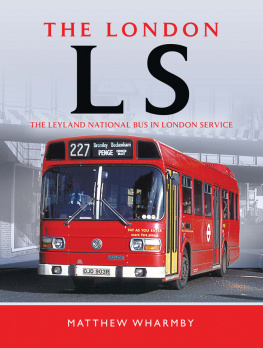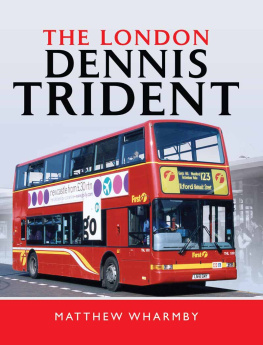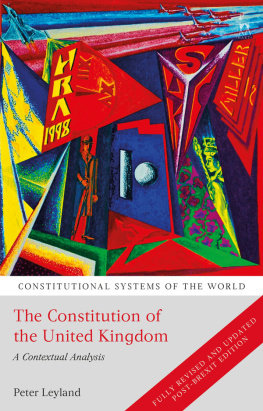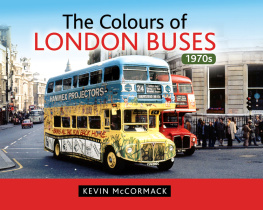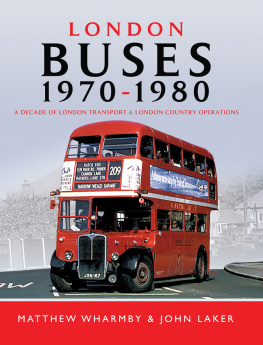
THE LONDON
LS
THE LONDON
LS
MATTHEW WHARMBY
Cover: Bromleys LS 103 (OJD 903R) shows just why single-deckers have always been the 227s only stock; the low bridge at Shortlands. New in 1977, it is seen during October 1979 and survives today in preservation. R. C. Riley
Rear cover, top: A comparison between the original design of Leyland National and its latter-day upgrade (as the National 2) can be seen when Peckhams LS 224 (THX 224S) passes Victorias LS 468 (GUW 468W) as the pair enter Victoria bus station on 28 October 1985. R. C. Riley
Rear cover, middle: Devolution of London Transport in the 1980s brought a new tapegrey livery and new fleetnames, not to mention new deployments for the LS class as their original routes were converted to minibus operation. Chalk Farm received LS 101 (OJD 901R) among others to convert the 214 when its Titans were needed elsewhere, and during 1989 it is captured on its way through Camden Town. Peter Horrex
Rear cover, bottom: As London Buses Ltd gave way to the private sector, its last move with its National 2s was to commission their comprehensive rebuilding as National Greenways, buying them another decade in service. Seen at Victoria on 3 July 2001, GLS 502 (GUW 502W) is a London General bus operating out of the dedicated Red Arrow base at Waterloo. Matthew Wharmby
Title page: Your basic London Transport Leyland National, whose only difference from the manufacturers rigid standard specification was in the fitment of moquette seats; everything else, from blinds to paintwork to numberplates was all Leyland. LS 318 (AYR 318T), coming into South Harrow bus station, was new to Harrow Weald in August 1979 and on 31 August 1982 was still working from there. John Laker
DEDICATION
To Mum
First published in Great Britain in 2018 by
PEN & SWORD TRANSPORT
An imprint of
Pen & Sword Books Ltd
Yorkshire Philadelphia
Copyright Matthew Wharmby
ISBN 978 1 47386 227 2
eISBN 978 1 47386 229 6
Mobi ISBN 978 1 47386 228 9
The right of Matthew Wharmby to be identified as Author of this work has been asserted by him in accordance with the Copyright, Designs and Patents Act 1988.
A CIP catalogue record for this book is available from the British Library
All rights reserved. No part of this book may be reproduced or transmitted in any form or by any means, electronic or mechanical including photocopying, recording or by any information storage and retrieval system, without permission from the Publisher in writing.
Pen & Sword Books Ltd incorporates the Imprints of Aviation, Atlas, Family History, Fiction, Maritime, Military, Discovery, Politics, History, Archaeology, Select, Wharncliffe Local History, Wharncliffe True Crime, Military Classics, Wharncliffe Transport, Leo Cooper, The Praetorian Press, Remember When, Seaforth Publishing and Frontline Publishing.
For a complete list of Pen & Sword titles please contact
PEN & SWORD BOOKS LTD
47 Church Street, Barnsley, South Yorkshire, S70 2AS, England
E-mail:
Website: www.pen-and-sword.co.uk
Or
PEN AND SWORD BOOKS
1950 Lawrence Rd, Havertown, PA 19083, USA
E-mail:
Website: www.penandswordbooks.com
INTRODUCTION
U ntil comparatively recently, the full-size single-decker occupied a distinctly second tier of importance in London, and indeed nationwide. Anxious to maximise capacity as best it could, London Transport standardised on double-deckers unless clearances both in height and width precluded them, but in 1966 resolved to reshape bus travel altogether to curb a long period of decline. Traffic-choked trunk routes would be curtailed and replaced at their outer ends by flat-fare shuttles operated by multi-standee single-deck routes with buses designed to be one-man-operated and thus save the cost of the second member of staff. Accordingly, 665 Merlins and 838 Swifts were taken into LT stock between 1966 and 1972, but passengers resented both the inhospitable nature of standing and having to change buses all the time, and the decline continued, if anything accelerated by the sheer unreliability of the new buses.
At the same time, Leyland Motors had gradually acquired or taken over most of the countrys bus manufacturing and bodying concerns and set out to assimilate their designs into a one-size-fits-all double-decker and single-decker alike. The latter incorporated advanced manufacturing concepts inspired by the car industry to produce the National, designed to complement the state-owned National Bus Company that, under the Transport Act of 1968, took over and standardised both the BET and Tilling groups.
Outside London, the National garnered considerable resentment for its part in sidelining established AEC, Leyland and Daimler models as well as its participation in the rebranding of traditional companies into the austere NBC, but in the capital, what became the LS class was received almost as a miracle. Here, after so long, was a genuinely reliable, if thoroughly unglamorous workhorse that just did the job asked of it without any fuss, and London Transport liked them enough to become the countrys major operator, taking 506 of them between 1973 and 1981. Of these, the last 69 were of the improved Leyland National 2 design.
The LSs settled down to do the ten years demanded of them without fanfare, carrying on amid the great upheaval that transformed London Transport into London Buses Ltd and its twelve subsidiaries, and then began departing at the end of the 1980s as minibuses took over their routes. But even then, as recession gripped the country and LBL prepared for privatisation, the National still had a role to play in London. Having seen how increasingly elderly examples had held the fort during the early days of deregulation, LBL got in on the game by refurbishing for a song its National 2s, turning them into the GLS class of National Greenways. And after that, London United, one of the post-LBL privatised operators, put its long-serving remnant of LSs through a simpler refurbishment programme that allowed them to continue in service as far as 1999.
Perhaps the valedictory of the otherwise unsung LS class is that as late as 2007, two dozen former London Transport examples could still be seen in everyday service in Walsall with Chase Coaches, with little more than an engine change and a single-door conversion (and sometimes not even that) belying thirty years of unbroken service.
This is the LSs story in the capital. Thanks of course are due to all photographic contributors, to my editor and to the publisher for allowing the story to be told.
Matthew Wharmby
Walton-on-Thames, Surrey
May 2017
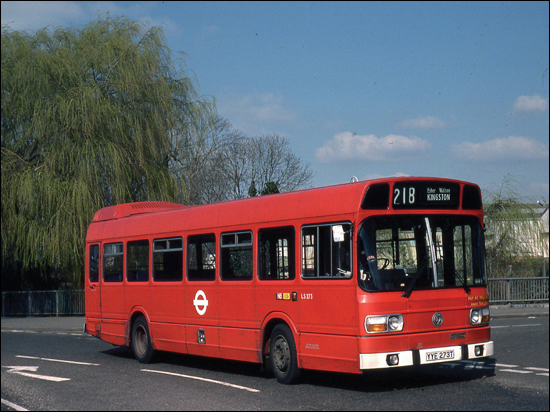
The era covered by this book spans unprecedented change to Londons buses. When this photograph of Norbitons LS 273 (YYE 273T) was taken at Staines in 1980, London Transport was unassailable, if long fallen from its halcyon days. Haydn Davies
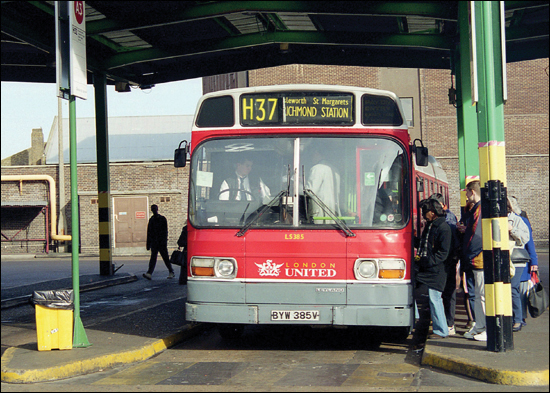
Two decades later, LT was gone, its constituents sold to the private sector. The LSs had achieved their expected decade and a bit, but the straitened financial conditions of the time prompted reconditioning of surviving Nationals, in order to make astute tendering bids. London United thus enjoyed three more years out of its LSs, and here at Hounslow on 20 February 1999 is LS 385 (BYW 385V). Author

